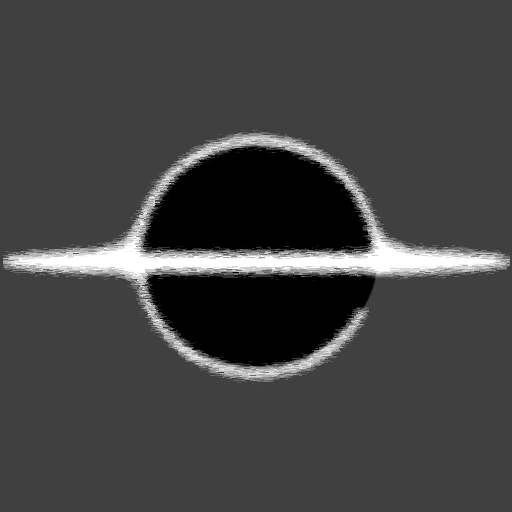BabylonJS - Data Driven GUI
In this article we will take a JavaScript JSON array of GUI control data and events, then using loops and Object.assign we will create GUI controls. I use a more robust version of this in my GUI generation, but that is more to allow for complex mapping of GUI controls to child controls. With this it allows for 90% of GUI scenarios to be created in a dynamic and easy to change structure.
Details
Here is an example of the data we will want to turn into GUI controls. Do note that this is JavaScript, it has a function callback that does some logic on a sphere.
const guiData = [{
type: "Slider",
data: {
minimum: 0.1,
maximum: 20,
value: 5,
height: "20px",
width: "150px",
color: "#003399",
background: "grey",
left: "120px",
horizontalAlignment: BABYLON.GUI.Control.HORIZONTAL_ALIGNMENT_LEFT,
verticalAlignment: BABYLON.GUI.Control.VERTICAL_ALIGNMENT_CENTER,
},
events: [{
name: "onValueChangedObservable",
callback: function (value) {
var sphere = scene.getMeshByName("sphere");
sphere.scaling = unitVec.scale(value);
}
}]
}]
Here is the logic to create dynamic data based on the above GUI control details.
const createGui = function (advancedTexture) {
// Here we loop through the array of gui controls
for (const controlDetails of guiData) {
// Using the type, which correlates to a control on the GUI
// namespace, we are able to create the control.
const control = new BABYLON.GUI[controlDetails.type]();
// Using the Object.assign we are able to assign the override
// data from the control details.
Object.assign(control, controlDetails.data);
// This loop will add any existing events to the just created control.
for(const eventDetails of controlDetails.events) {
if(control[eventDetails.name]) {
control[eventDetails.name].add(
eventDetails.callback
);
}
}
// Add the created control to the screen.
advancedTexture.addControl(control);
}
};
Example
Below is a very simple application showing off a GUI created from a JSON representation.
Here is a playground link to see the code and experiment with it your self.
(TODO: Create demo page and iframe to page)
Code for above example
<!DOCTYPE html>
<html>
<head>
<meta http-equiv="Content-Type" content="text/html; charset=utf-8" />
<title>Babylon.js sample code</title>
<!-- Babylon.js -->
<script src="https://code.jquery.com/pep/0.4.2/pep.min.js"></script>
<script src="https://cdnjs.cloudflare.com/ajax/libs/dat-gui/0.6.2/dat.gui.min.js"></script>
<script src="https://preview.babylonjs.com/ammo.js"></script>
<script src="https://preview.babylonjs.com/cannon.js"></script>
<script src="https://preview.babylonjs.com/Oimo.js"></script>
<script src="https://preview.babylonjs.com/libktx.js"></script>
<script src="https://preview.babylonjs.com/earcut.min.js"></script>
<script src="https://preview.babylonjs.com/babylon.js"></script>
<script src="https://preview.babylonjs.com/inspector/babylon.inspector.bundle.js"></script>
<script src="https://preview.babylonjs.com/materialsLibrary/babylonjs.materials.min.js"></script>
<script src="https://preview.babylonjs.com/proceduralTexturesLibrary/babylonjs.proceduralTextures.min.js"></script>
<script src="https://preview.babylonjs.com/postProcessesLibrary/babylonjs.postProcess.min.js"></script>
<script src="https://preview.babylonjs.com/loaders/babylonjs.loaders.js"></script>
<script src="https://preview.babylonjs.com/serializers/babylonjs.serializers.min.js"></script>
<script src="https://preview.babylonjs.com/gui/babylon.gui.min.js"></script>
<style>
html, body {
overflow: hidden;
width: 100%;
height: 100%;
margin: 0;
padding: 0;
}
#renderCanvas {
width: 100%;
height: 100%;
touch-action: none;
}
</style>
</head>
<body>
<canvas id="renderCanvas"></canvas>
<script>
var canvas = document.getElementById("renderCanvas");
var engine = null;
var scene = null;
var sceneToRender = null;
var createDefaultEngine = function() { return new BABYLON.Engine(canvas, true, { preserveDrawingBuffer: true, stencil: true }); };
const unitVec = new BABYLON.Vector3(1, 1, 1);
const guiData = [{
type: "Slider",
data: {
minimum: 0.1,
maximum: 20,
value: 5,
height: "20px",
width: "150px",
color: "#003399",
background: "grey",
left: "120px",
horizontalAlignment: BABYLON.GUI.Control.HORIZONTAL_ALIGNMENT_LEFT,
verticalAlignment: BABYLON.GUI.Control.VERTICAL_ALIGNMENT_CENTER,
},
events: [{
name: "onValueChangedObservable",
callback: function (value) {
var sphere = scene.getMeshByName("sphere");
sphere.scaling = unitVec.scale(value);
}
}]
}];
const createScene = function () {
const scene = new BABYLON.Scene(engine);
const light = new BABYLON.PointLight("Omni", new BABYLON.Vector3(0, 100, 100), scene);
const camera = new BABYLON.ArcRotateCamera("Camera", 0, 0.8, 100, new BABYLON.Vector3.Zero(), scene);
camera.attachControl(canvas, true);
const sphere = BABYLON.MeshBuilder.CreateSphere("sphere", {}, scene);
sphere.scaling = unitVec.scale(5);
const advancedTexture = BABYLON.GUI.AdvancedDynamicTexture.CreateFullscreenUI("UI", true, scene);
// Here we loop through the array of gui controls
createGui(advancedTexture)
return scene;
};
const createGui = function (advancedTexture) {
// Here we loop through the array of gui controls
for (const controlDetails of guiData) {
// Using the type, which correlates to a control on the GUI
// namespace, we are able to create the control.
const control = new BABYLON.GUI[controlDetails.type]();
// Using the Object.assign we are able to assign the override
// data from the control details.
Object.assign(control, controlDetails.data);
// This loop will add any existing events to the just created control.
for(const eventDetails of controlDetails.events) {
if(control[eventDetails.name]) {
control[eventDetails.name].add(
eventDetails.callback
);
}
}
// Add the created control to the screen.
advancedTexture.addControl(control);
}
};
engine = createDefaultEngine();
if (!engine) throw 'engine should not be null.';
scene = createScene();
sceneToRender = scene
engine.runRenderLoop(function () {
if (sceneToRender) {
sceneToRender.render();
}
});
window.addEventListener("resize", function () {
engine.resize();
});
</script>
</body>
</html>

